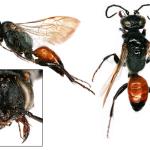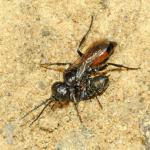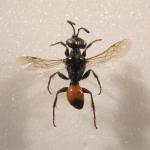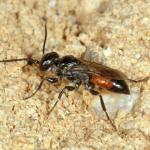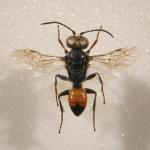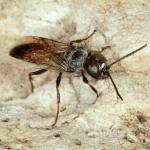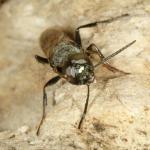Larra pinguis (ZETTERSTEDT,1838) preocc.; Astata jaculator (SMITH,1845); Driudella stigma misident.
This species was previously included in the genus Astata.
There are scattered records from England, Wales, Scotland and eastern Ireland. Also found in the Channel Islands. A Holarctic species occurring in northern Europe and through Russia to Alaska and Colorado in North America.
Not listed in Shirt (1987) or Falk ( 1991); work for this Atlas suggests that revision of its status is needed.
Sandy localities, such as coastal dunes and inland heaths. Particularly associated with areas of bare sand and sparsely vegetated areas.
Univoltine; May to August.
Nymphs of pentatomid and particularly lygaeid bugs (Heteroptera) (Richards, 1980).
The species nests in sandy banks exposed to the sun. The nest consists of a burrow approximately 6 cm long, inclined at a shallow angle to the ground, followed by a single cell slightly enlarged from the burrow (Lomholdt, 1975-76). There is little information on how many bug nymphs are used per cell (Lomholdt records at least six in one unfinished nest) or on which bug the egg is laid (first or last).
No information available.
The chrysidid wasp Hedychridium cupreum (Dahlbom) is a recorded parasitoid or cleptoparasite (Morgan, 1984).
1998


